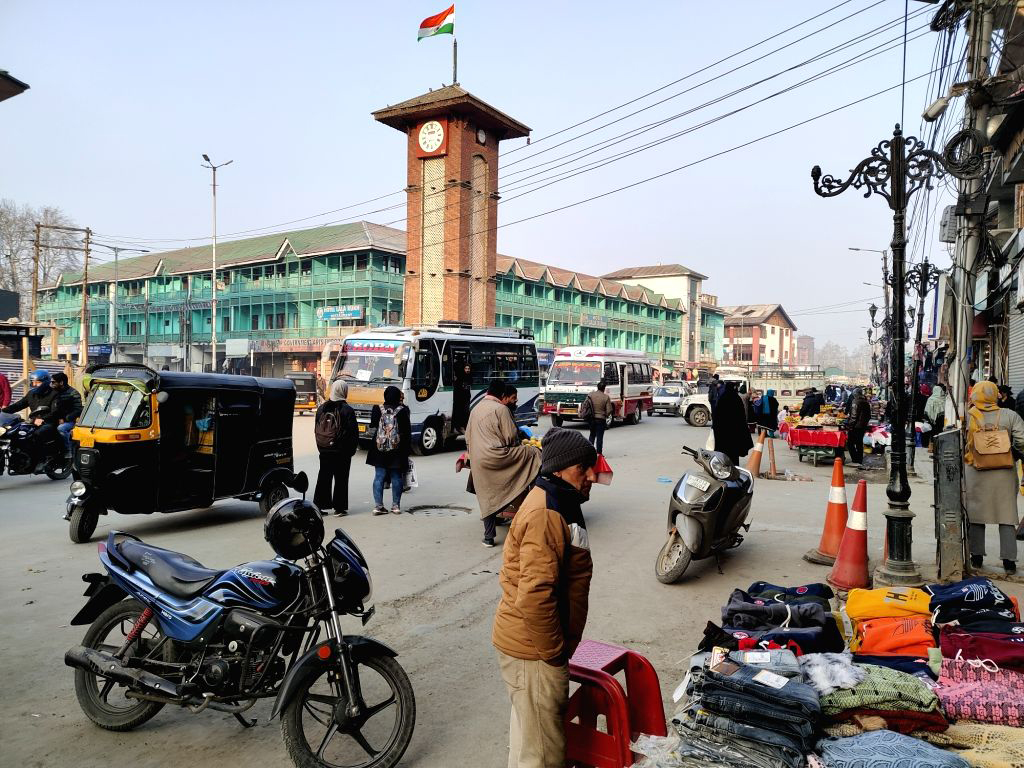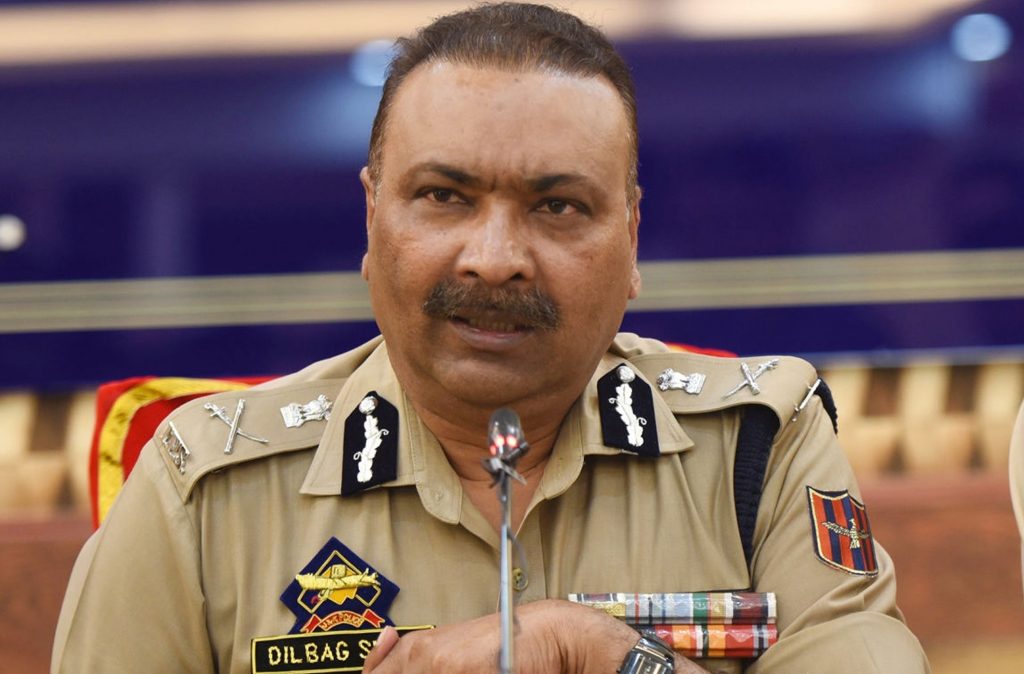
After managing to put down the ultra violence with a heavy hand in Kashmir, the government is now considering using the counter-insurgency strategy adopted in the valley to deal with revival of militancy in Jammu’s twin districts of Poonch and Rajouri, reports Riaz Wani
Speaking at a function on August 23, J&K DGP Dilbagh Singh said that the security forces were working to not just contain but to eliminate militancy in the union territory. And according to him, the security agencies had come close to doing this, with 99 percent of the infiltration attempts successfully thwarted this year.
The border security grid, he said, has been reinforced with new elements, making it “much stronger than ever”. And as a result, although infiltration attempts have persisted, there has been no discernible upward trend, the DGP asserted.

It is true that the militancy has progressively declined in J&K since the abrogation of Article 370 on August 5, 2019. Earlier this year, the DGP Singh said, the number of militants is at an “all time low”. Some estimates put the number under 50, and if the killings of the militants continue at the current rate, the militancy could be over before the end of this year.
The consequent overall transformation in the situation is borne out by the drastic reduction in the militancy related incidents.
Official figures
According to the government figures reported in the media, as against the 930 militancy-related incidents witnessed in the Valley in the three years prior to the withdrawal of Article 370, only 617 such incidents were reported in the same period after the revocation.
According to police data, 174 police and security personnel were killed in militancy violence in Kashmir between August 5, 2019 to August 4, 2022, compared to the killing of 290 personnel over the three years prior to the revocation.
From January 1 to August 5 this year, 35 militants were killed in different operations. In comparison, last year, 186 militants, including 56 foreigners, were killed.
The number of civilians killed in militancy related violence has also gone down. While 191 civilians died in three years before revocation of Article 370, 110 civilians were killed in the same period after the abrogation.
The period after abrogation has witnessed a steep rise in the arrests of over-ground workers (OGWs) of the militant groups. According to data of Ministry of Home Affairs, 82 OGWs were arrested from January to July in 2019 but the number went up to 178 over the same period in 2021.
More importantly, the number of local youths joining militant groups has also declined. From 206 in 2018 and 143 in 2019, only 100 Kashmiri youth were recruited by militants in 2022. The number is expected to have gone further down this year.
This has made a massive difference to the prevailing law and order situation. The union territory has witnessed a 32 percent decline in encounters and counter-militancy operations, from 539 in the three years before the abrogation of Article 370 to 369 in the same period after it
There has also been a reduction in civilian casualties during law and order situations such as encounters, stone-throwing and protests. No such killings were recorded after the Article 370 revocation, as compared to 132 in the few years before.
However, the number of IED blasts has remained more or less unchanged, with 19 incidents reported in the three years before and after the abrogation period.
Challenges persist
Despite the conspicuous change in overall security situation the region continues to grapple with the challenge of militancy. One such challenge has been the revival of militancy in Poonch and Rajouri districts of Jammu division.
More than a decade ago, the twin districts were declared free of militancy by the government. However, since October 2021, the region has witnessed a surge in militant attacks which has resulted in the killing of 35 people, 26 of them soldiers.
No doubt, an uneasy calm prevailed in Jammu in 2022, but this year the region has once again become a hotspot for militancy, with around security personnel being killed in two ambushes. This has raised concerns about the number of militants in the area. It is believed that the militants have infiltrated from across the border, although the exact number is unknown. The dense forests of the region have made it difficult for security forces to trace them. The situation has been made even more concerning by the fact that the forest area where the militants are hiding extends to Shopian in South Kashmir, the district that has been a hotbed of militancy in recent years. But the militants have chosen to stay in Jammu only, possibly because the region has a lower concentration of security forces than the Valley and also a warmer climate throughout the year.
One reason being offered for the growing militant activity in Jammu areas is the thinning of the presence of security forces in the region in the last two years, a fact being exploited by the militants. Two reasons are offered for this state of affairs: one, the ceasefire along the Line of Control between India and Pakistan, which was renewed in early 2021, and has since held despite predictions to the contrary. Second the consequent redeployment of the Rashtriya Rifles, the main counter-insurgency force in Jammu and Kashmir (J&K), to the Line of Actual Control in Ladakh following China’s incursions along the border. This is believed to have created a void along the border in Jammu, which may have been taken advantage of by militants, resulting in a resurgence of violence in Jammu.
The government is now working on a plan to replicate the counterinsurgency strategy adopted in Kashmir Valley, to curb the rising violence in Jammu. This includes identification and arrest of over-ground supporters of militants, proactive counter-insurgency operations, deployment of police, Army, Central Armed Police Force (CAPF) and night patrolling and area domination, which are believed to have helped check infiltration to a large extent in the Kashmir region.
“In Kashmir, we adopted a 360-degree approach to maintain peace. My government succeeded to a large extent,” Lieutenant Governor Manoj Sinha said in a recent statement “Jammu was peaceful earlier, but Rajouri and Poonch districts witnessed some unfortunate incidents in the recent past. However, the plans adopted by security and intelligence agencies to finish terrorism in the Kashmir Valley are now being implemented in the twin border districts of Rajouri and Poonch to ensure that peace returns in these regions as well.”
However, it may be some time before security forces succeed in doing so. The challenge of militancy in Jammu is of a different nature than in Kashmir: a case in point is the recent instance of timely detection of an IED found near Nagrota along the Jammu-Srinagar national highway. If anything, this shows that the challenge isn’t limited to Poonch and Rajouri only.













